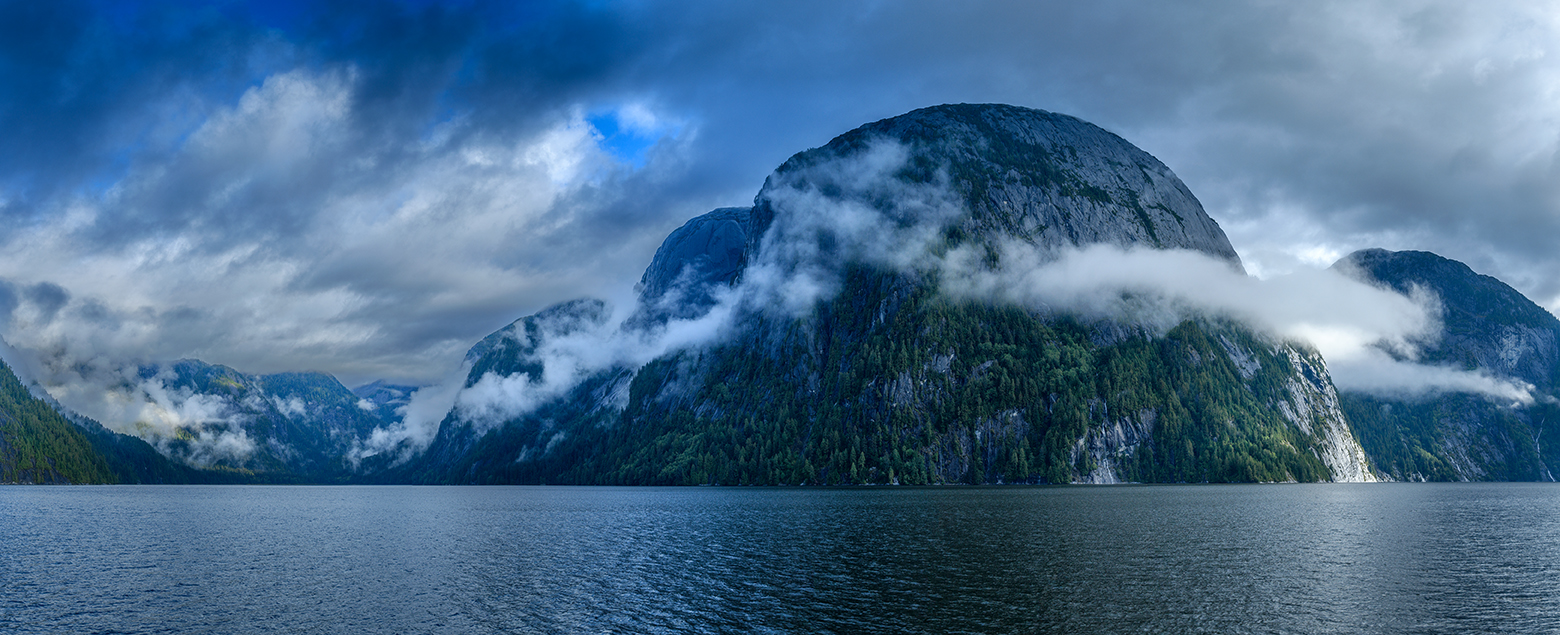
I actually didn’t want to take a camera with me and wanted to enjoy our 7 days at sea in the Great Bear Rainforest of British Columbia with my eyes. The cruise was a birthday present for Regula and not an assignment. So I didn’t have to take photos, I could just enjoy it, but… of course I couldn’t help myself and brought two cameras with me. The indestructible Nikon 850 and its little DX brother, the D500. A zoom 200 -500 (750 in the crop range) and a 24 – 85 zoom as well as a wide angle. Two polarizing filters and a tripod. Once a photographer, always a photographer, I told myself, and was glad that I had brought them.
But now I was sitting like a wet poodle on a rocking rubber dinghy in the cold rain at a river mouth on the coast. My boatmates, five couples in total, spread out between two dinghies, suffering in silence, were dressed in waterproof clothing. The cameras and lenses wore their plastic covers and our captain Neil looked like a marine during the Normandy landings. His gaze was fixed on the mountains that towered behind the wetland like the battlements of Mordor.
Bald Eagles were sitting in large numbers on the Sitka firs. I counted twenty large birds in one tree. Seagulls swam on the water like rubber ducks in a bubble bath , and a cold wind swept towards us from the open sea, rocking our boat like a swing. The remains of salmon were everywhere in the water, so the bears couldn’t be far away.
Captain Ahab, as I called Neil in my mind, was looking for bears and I could see from the looks of my travel companions that they were already thinking about happy hour on the boat and didn’t really wanted to be here. Only Regula seemed to be in good spirits and had her usual smile on her face.
The rain was coming harder now, lashing at our hoods, blowing in our faces and I was glad that Regula had packed our waterproof trousers. There was no bear in sight that evening, and we were glad when we were back in our boat drinking hot tea. Kevin, our chubby cook, had cooked a tasty salmon dish and everyone was wearing dry pants again. Water had gotten into some of our friends clothes, but we had stayed dry and the plastic covers, which were attached with adhesive tape to act as raincoats for the telephoto lenses, had done their job.
The Central Coast of British Columbia was renamed the Great Bear Rainforest, which sounds better and is easier to market. The magnificent fjord landscapes there are reminiscent of Norway and New Zealand, but have the great advantage of being home to bears and wolves, which is one of the reasons why we were there. Unfortunately, not all of the region is protected. It is a patchwork of private, provincial and Indian (First Nation) land, which is managed in a complex Byzantine system. Indian does not always mean nature conservation and the interests of the province are often more focused on tax revenue than on protecting wild animals.
Money talks, in Canada too it is about money, jobs, wood and fishing and short-term profits.
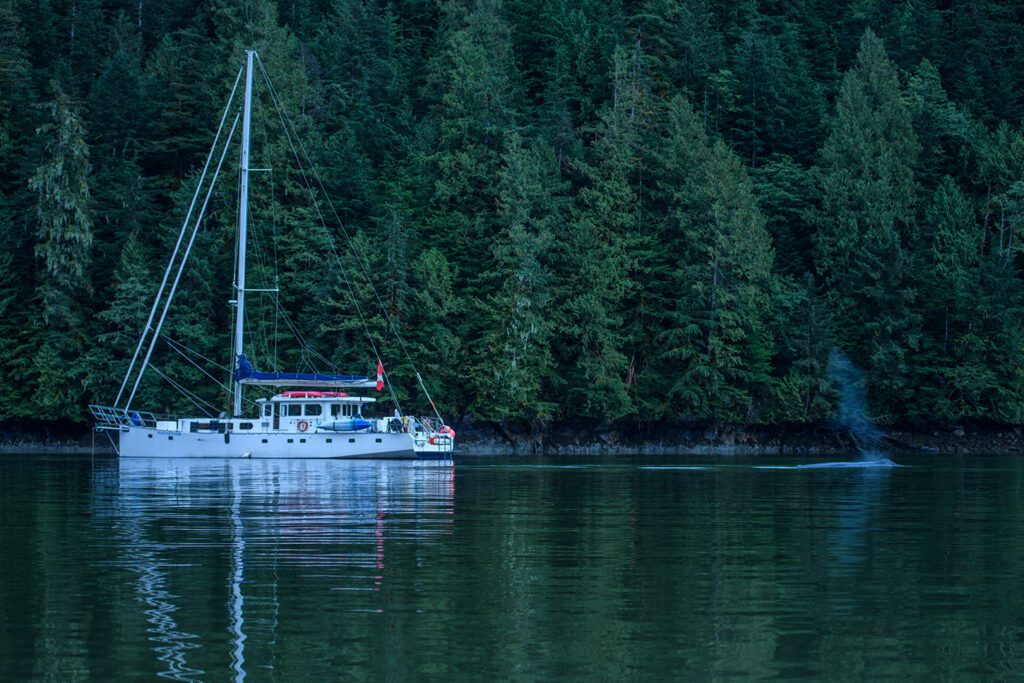
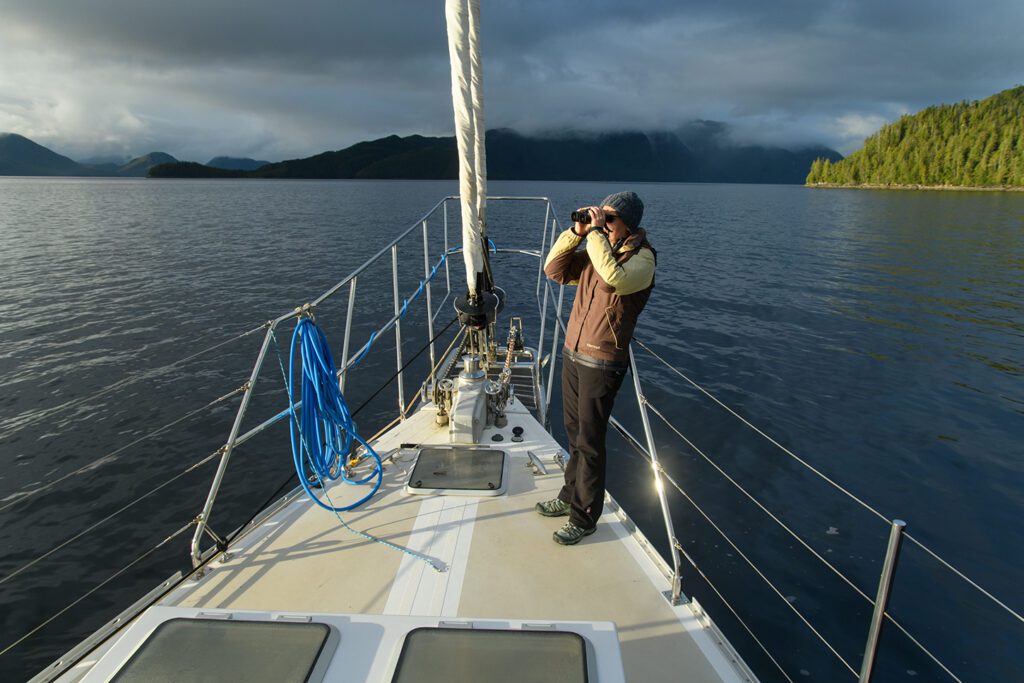
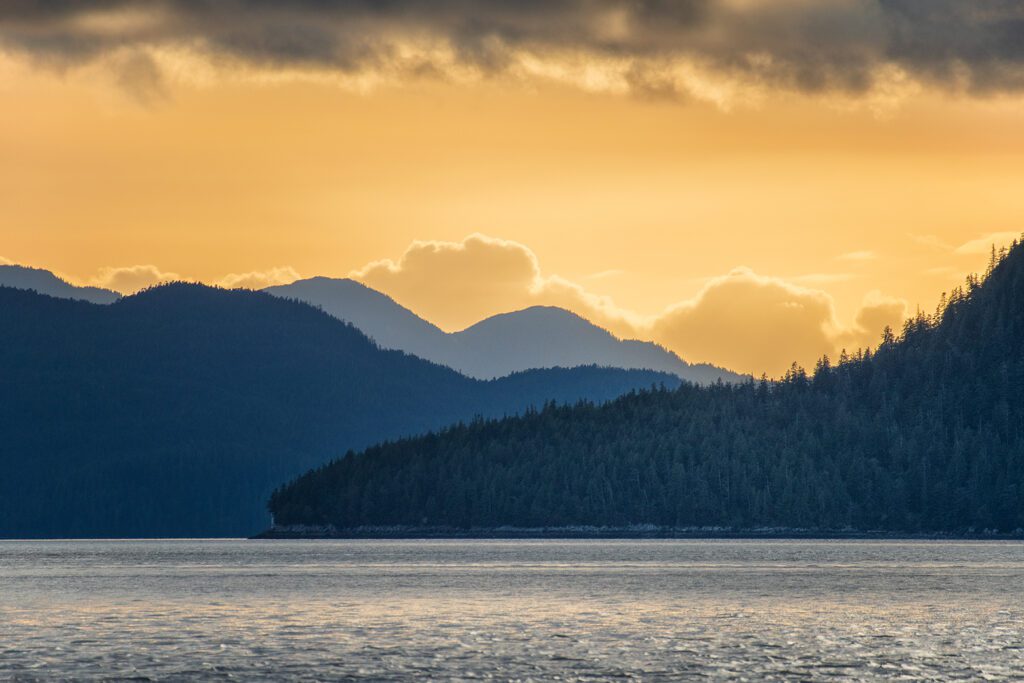
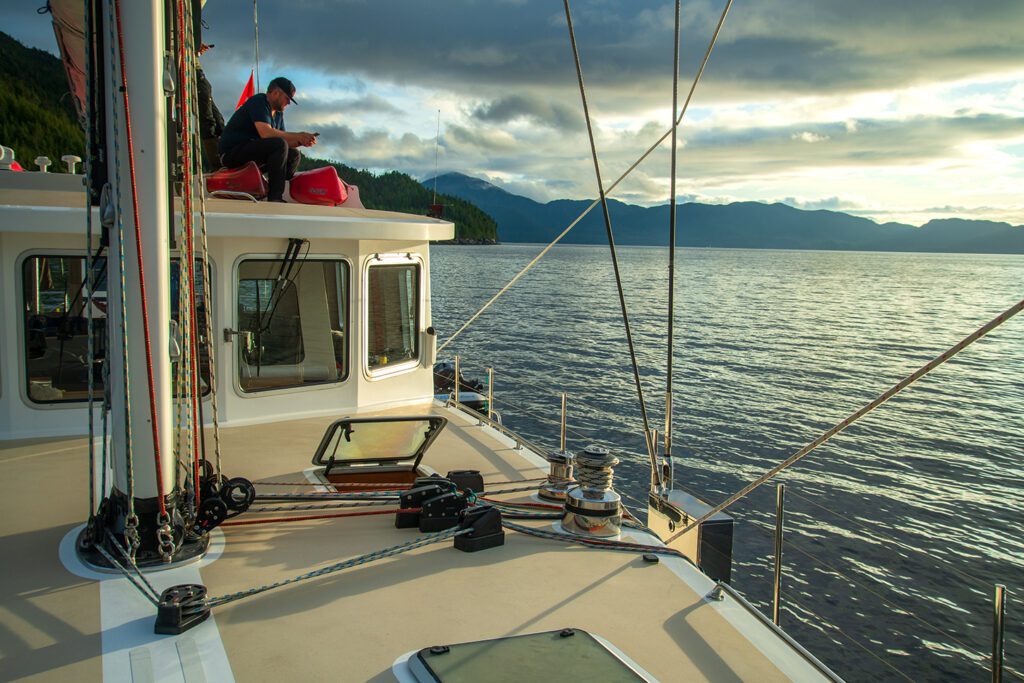
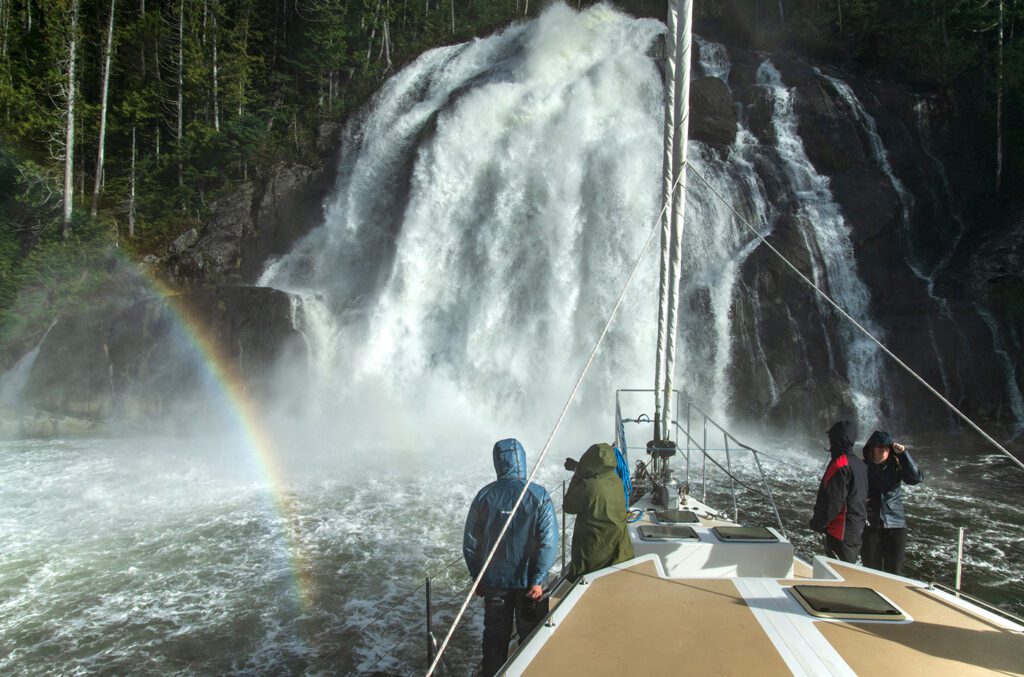
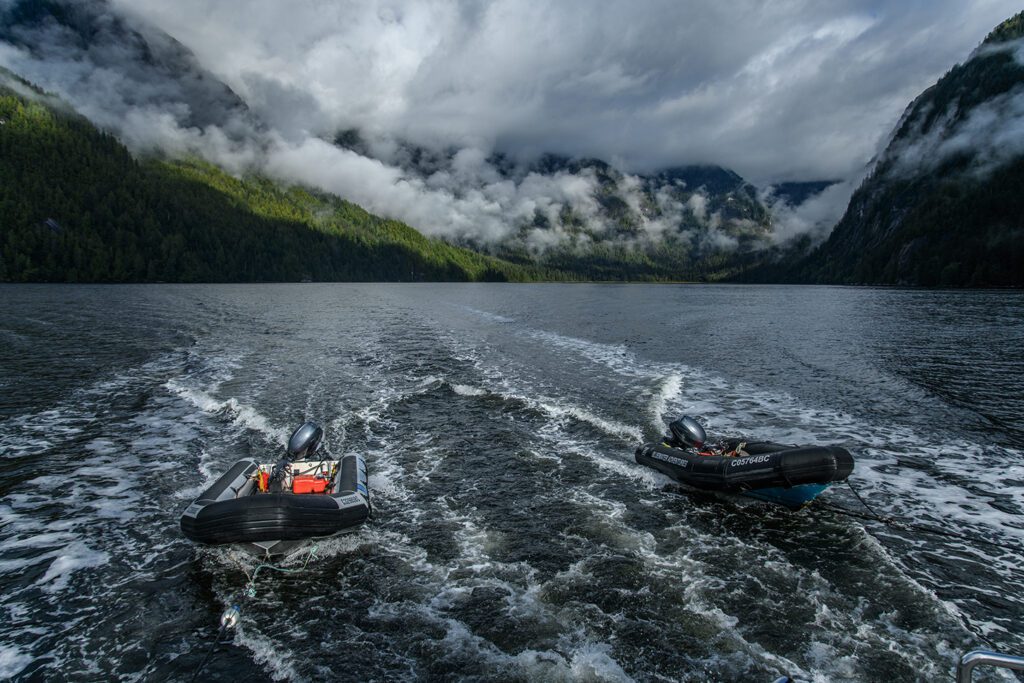
At the mouth of the Mussel River, the next day we see nothing but eagles, ravens and dead salmon, mist-covered Sitka and hemlock firs and a few cedars. Captain Ahab, who is steering the boat standing up, suddenly says: “There they are, the bears.” We, who are sitting a little lower, can’t see anything. Our dinghy chugs gently along the bank and I see brown spots in the grass. There are three grizzly bears sleeping. You hardly notice them; you could have walked right into them. One raises its head and looks at us. Another head appears. We look at each other, from man to bear and bear to woman. Our cameras click away. It is a beautiful, peaceful encounter.
The next day we are in the Kootze tributary and find ourselves in a similar situation. There are two grizzly bears on a small grass island in the river mouth. They are siblings, about 2.5 years old, who are out on their own for the first time without their mother. Our dinghies bob on the north side of the island and we photograph the bears with our telephoto lenses. They slowly walk towards us, which is rather unusual. They come sniffing up to the bank and are now only a few meters in front of us. Then they start to play, wrestling in front of our camera. My lens is almost too strong, they are so close and Captain Ahab says, more to himself: “unbelievable.” Later the guides say that it was the closest bear encounter they have ever experienced. The grizzlies were so close that I filmed with my cell phone, because my 200 mm lens was too strong for some of the pictures.
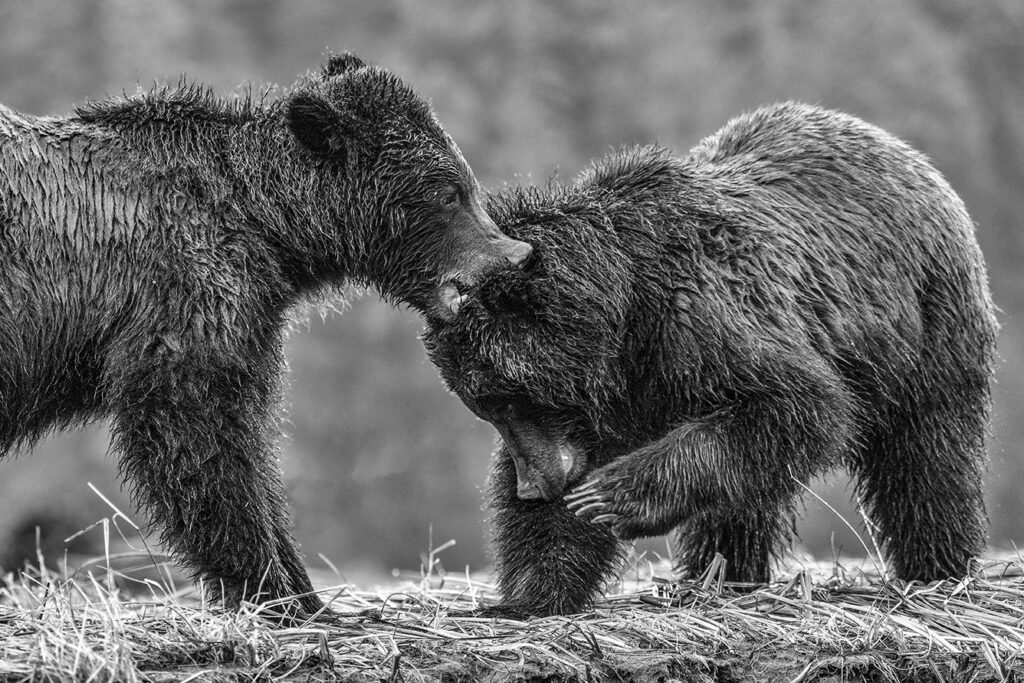
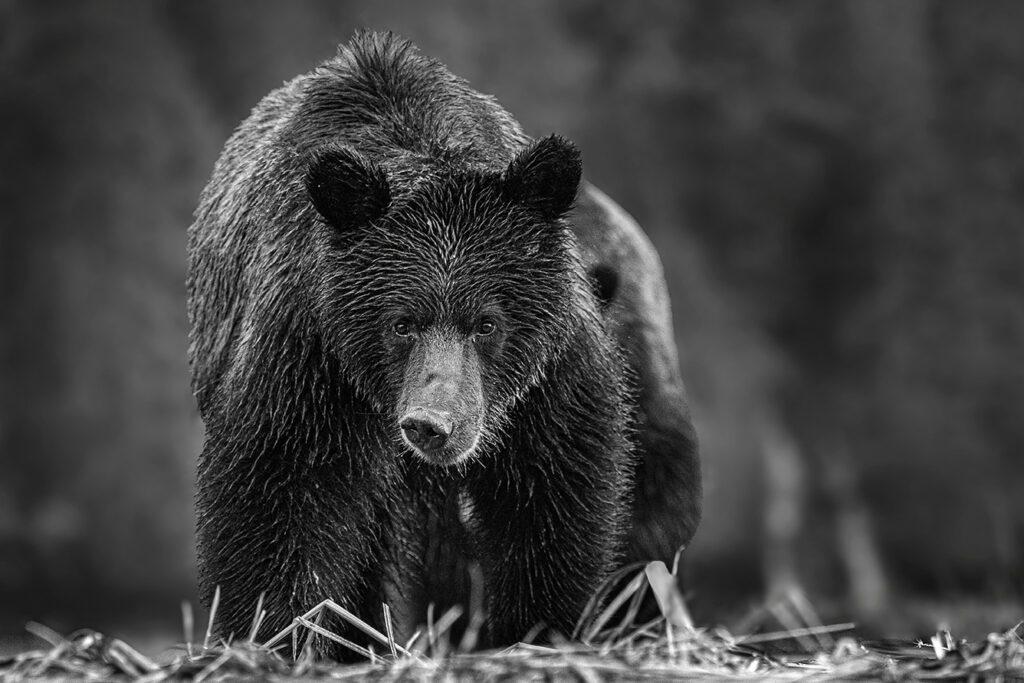
Bears have an extremely fine sense of smell. They are far more sensitive than dogs and have therefore smelled us long before we saw them. They came to us because they are safe here in the untouched nature and do not perceive us as a threat. British Columbia banned grizzly hunting a few years ago, which means that animals do not see us as a threat. Unfortunately, some of the hunting associations want to go back to kill them, which is madness, and Captain Ahab, Neil, is incredibly angry about it. I cannot understand how someone can murder such an animal without feeling guilty about it. Trophy hunters and trophy fishermen are on the same level as mosquitoes and houseflies in my opinion.
Bears are peaceful animals that don’t care about people and don’t pose a threat as long as you behave sensibly. Jogging, for example, is not a good idea in bear country, also not, if there are pumas and wolves. If you run, you reveal yourself as prez and awaken the predators’ hunting instinct. The bear is only dangerous if you approach the young and the mother wants to protect them. The problem is humans, not bears. If a bear attacks a human, there is usually a media outcry. The bear is called a problem bear and is shot.
Thousands of people die every day because of drunk drivers, psychopathic criminals, teenagers without driving licenses and food contamination, but that is accepted. Drunk drivers, repeat offenders who murder someone, could also be called problem people and shot, but people see only themselves.
Nature photographer Paul Nicklen, who has been photographing bears for decades, says: They are simply misunderstood and unfairly characterized, but for the most part they are peaceful, gentle and intelligent creatures.
That is going through my head on this trip as I observe bears in many places.
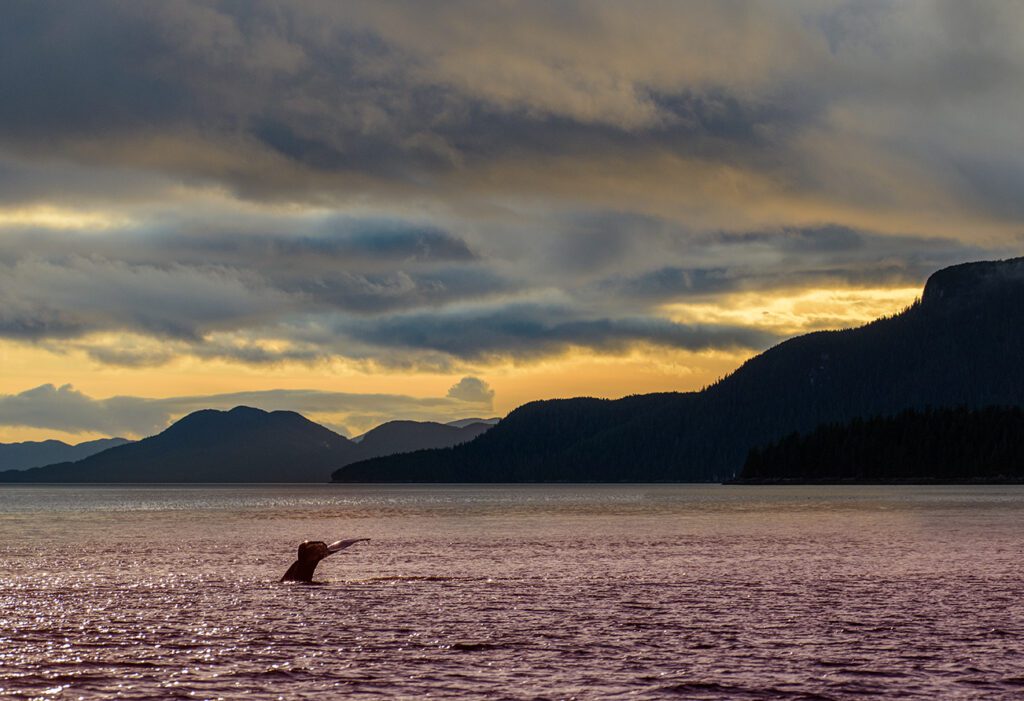
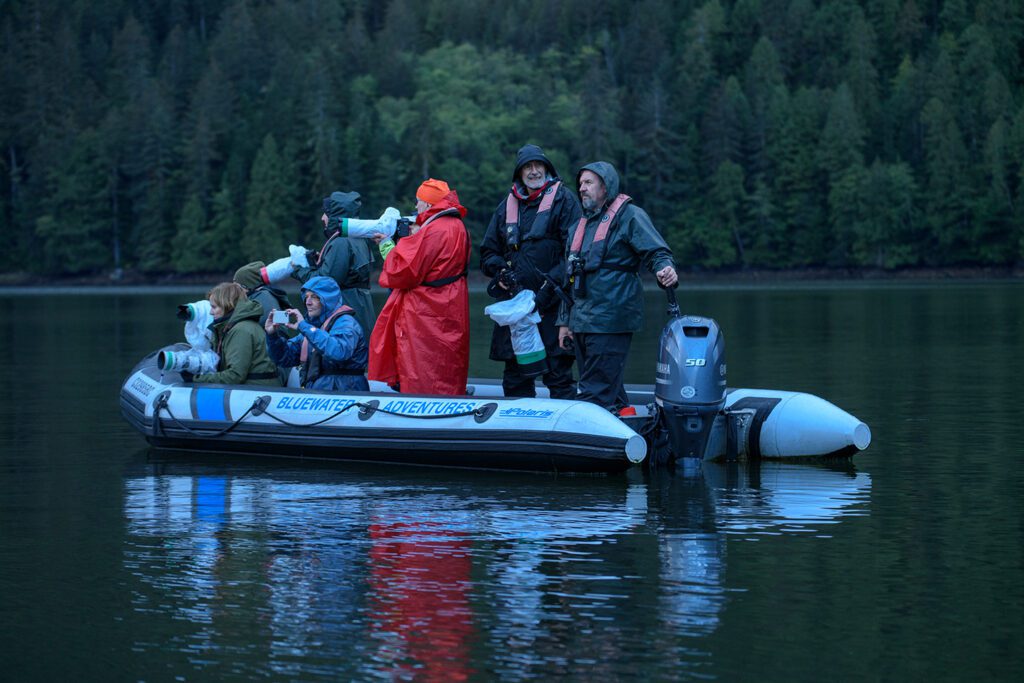
Our ship sails through the fjord landscapes formed by the last Ice Age. Waterfalls flow down the granite rocks everywhere because it has rained a lot. There is noticeably little shipping traffic. We hardly see another person for days. Instead, we see endless whales, seals and harbor seal colonies, eagles and many types of water birds. Most of the slopes are densely forested, but the trees live on thin soil because only a thin layer of humus has formed on the granite.
Temperate rainforest stretches along the rivers. It is a country that seems to have been forgotten by our civilization, just as I like it.
Once, just before dark, we see four wolves on a beach. Today they are called sea wolves, but they are simply wolves that come to the sea.
After the long ice age that shaped the landscape here, Indians settled along the coasts. People came here from Asia over 12,000 years ago by water, but they did not stay. The ancestors of today’s tribes along the central coast of British Columbia settled 8,000 years ago when the glaciers receded and it became warmer. The conditions of the land meant that the tribes developed differently. They settled in the estuaries and in protected bays not exposed to the open sea. All Indians here lived from the sea. The gigantic quantities of salmon, mussels, crabs and lobsters meant that no one went hungry. A few tribes, such as the Makah hunted whales and all supplemented their diet with roots, berries and tubers. Since there are very different peoples living along the coast, even today one cannot speak of a uniform Indian attitude, which makes protecting the region more difficult. The Canadian government, as well as the provincial governments, are exposed to pressure from the industrial barons of the timber industry, oil and gas, and coal. For example, they want to build an oil pipeline through the fjords in order to ship oil from what is probably the world’s dirtiest extraction area, the bitumen mines in Alberta, to Asia. The pipeline consortium is actively trying to convince Indian tribes of this. Nobody knows what the future will look like. Although the question is not so much whether the Indians have enough jobs, but whether our civilization will survive the impending climate catastrophe.
Our trip took place at the end of September and large winter storms were already coming from the Pacific, developing continuously in the Pacific and then raining down along the northwest coast of BC and Alaska. Captain Ahab was constantly busy finding sheltered bays so that we could sleep peacefully. One time in the middle of the night a whale rammed our boat, but otherwise it was quiet. The humpback whales were everywhere and I took lots of photos of tail fins and splashes. Towards the end of the week, after seeing 22 grizzly bears and 5 black bears and unfortunately no spirit bear sighting, we were ready to go back on land. The white bear that is native to the area did not show itself. The spirit or Kermode bear is a white black bear that sometimes has white hair due to a genetic trait and is not an albino.
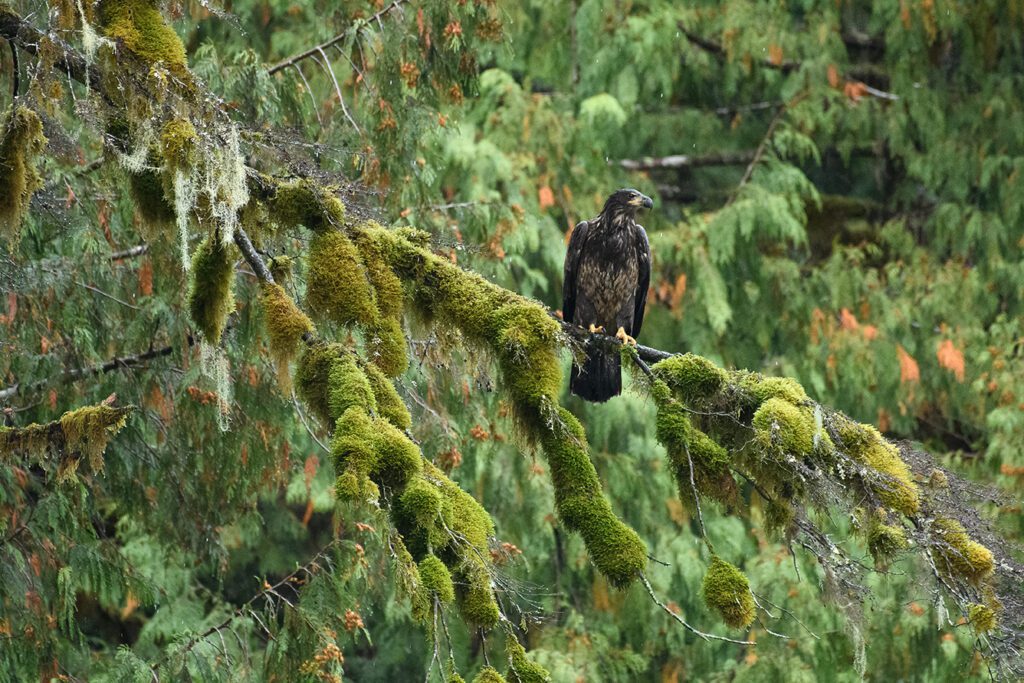
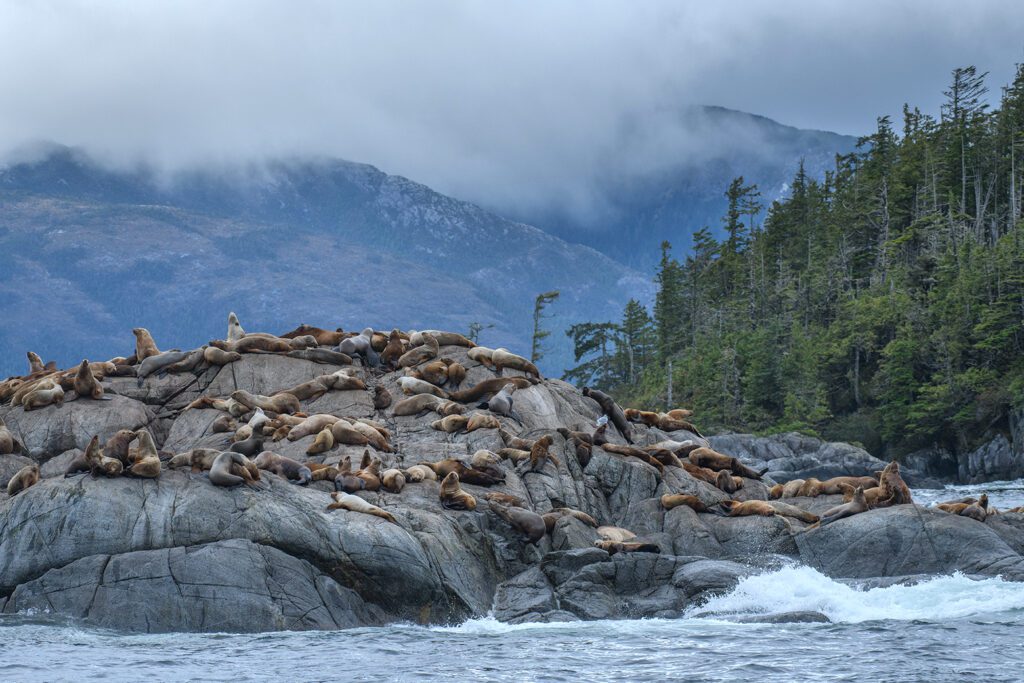
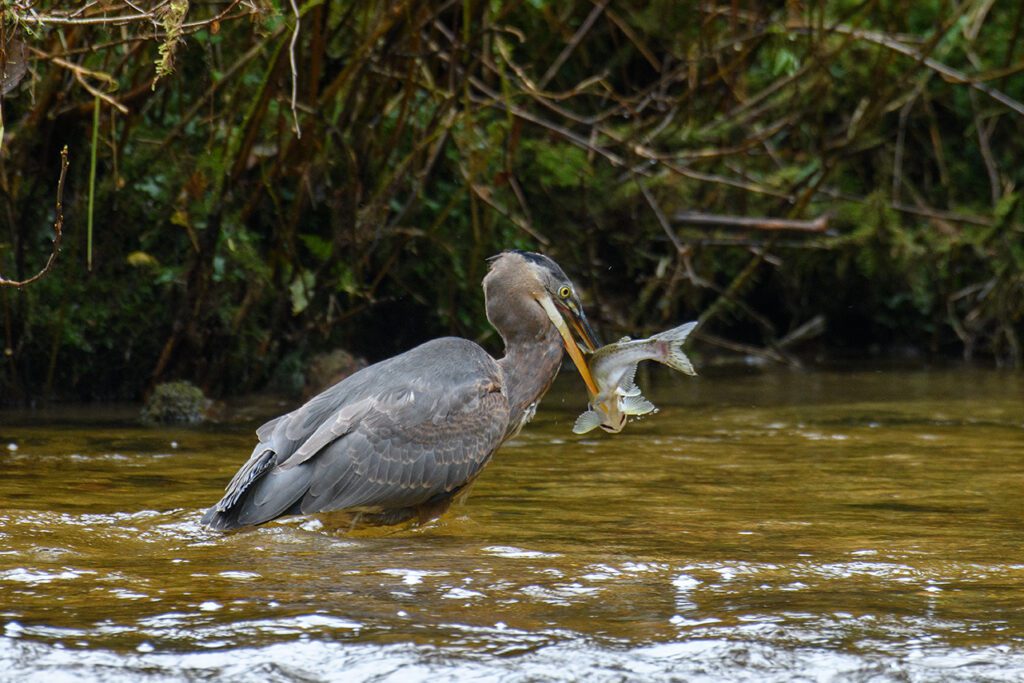
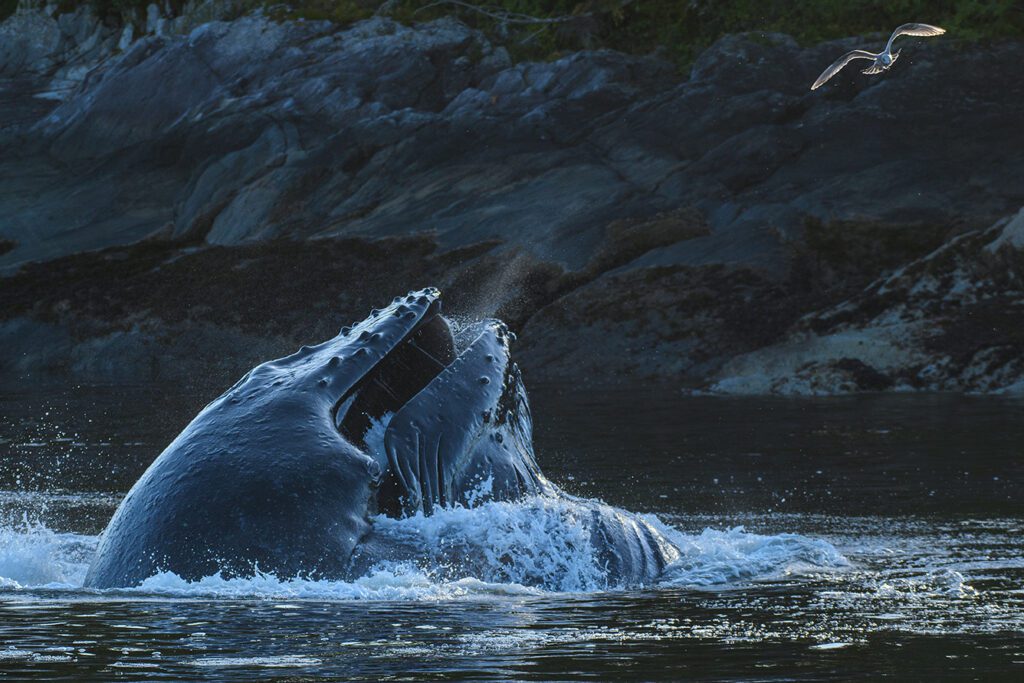
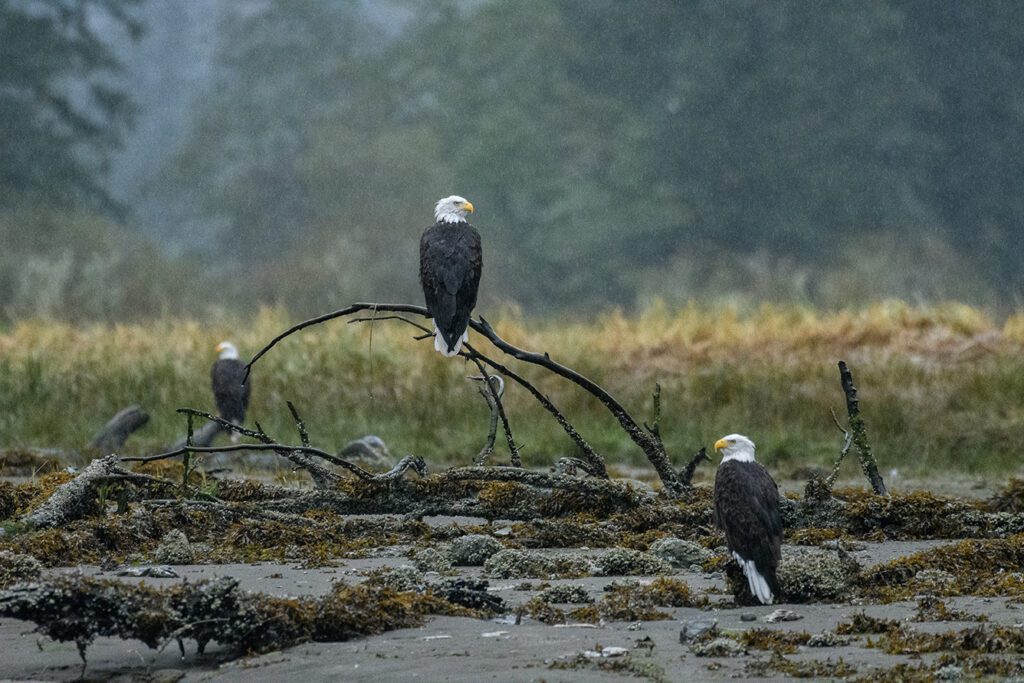
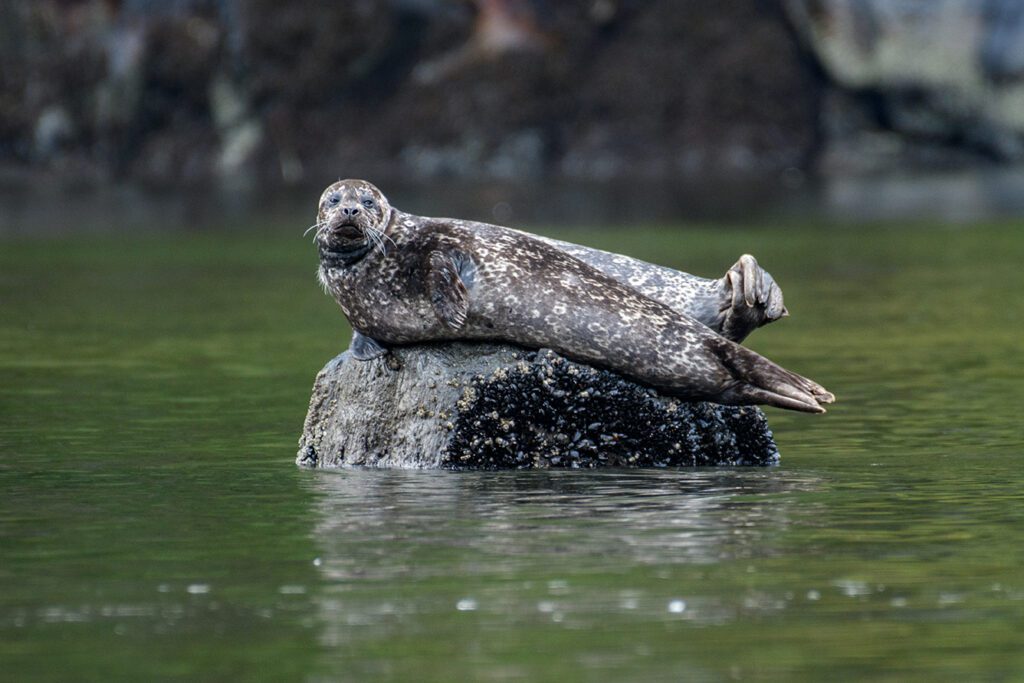
The weather was getting worse, the clouds touched the surface of the sea and it was raining incessantly. It is a strange feeling when you have internet again after a week, see dirty streets and meet more people in two minutes than you had in a week before. A taciturn Sikh drove us in an old school bus from Kitimat to the regional airport in the town of Terrace. We all sat in silence on the bus while the Sikh driver drove us through scavenged forest landscapes.
In Vancouver we had booked a hotel at the airport and there was our car, which we would use to drive home to Oregon the next day. We drove to a shopping area to get something to eat. Teslas seemed to be the car that people drove here and the world consisted only of shops and restaurants. Urban sprawl at its finest with a Canadian accent, I thought. Vancouver is Asia. The people all seemed to be from Asia, so we ate in a small Vietnamese noodle kitchen surrounded by people trying to eat soup and use their cell phones at the same time. It would have looked just like Seoul, Shanghai or Hanoi.
The Indian man at the reception desk in the hotel was typical of his race. He had beautiful features and dark skin like carved from hardwood, was friendly and sociable and had never heard of Bella Bella, knew nothing of bears, wild rainforests and whales. His world ended on the outskirts of Vancouver and probably the same for 98 percent of the emigrants in the country. The Indian was a member of an international group of city dwellers who seemed the same everywhere in the world. City dwellers who had lost all connection to nature, to our earth, and lived in a technological capsule that gave them the illusion of being able to exist without the laws of nature. I wondered how we could save our civilization if people didn’t even know that a real world existed outside of the Internet, that we lived in a world with limited resources and that we were already using more every year than could be regenerated.
Then we paid our bill and drove 8 hours home to Oregon.
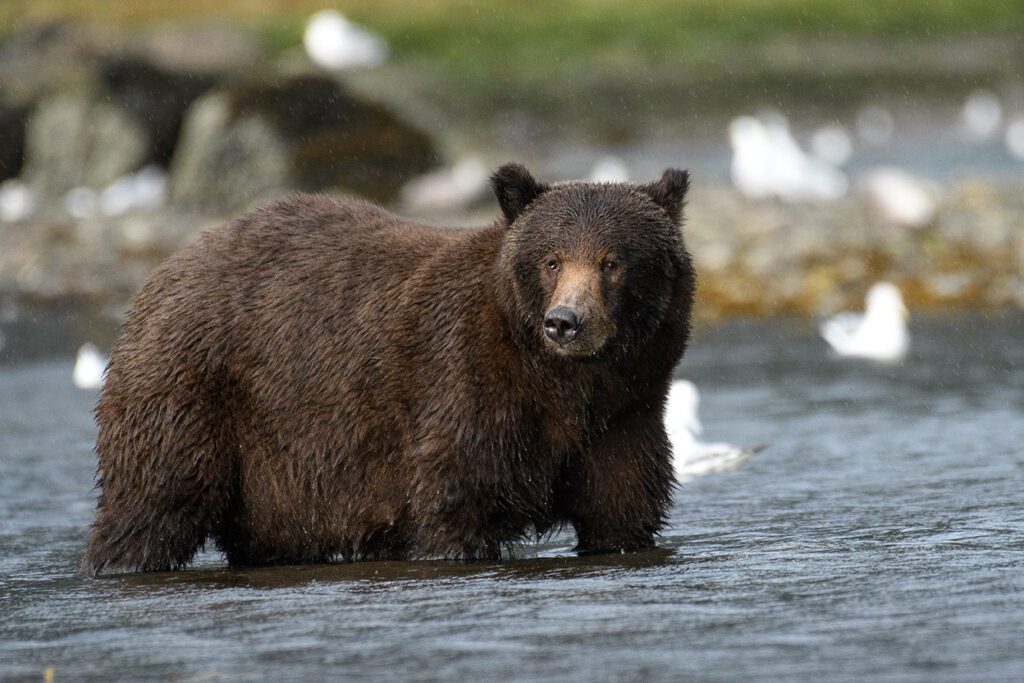
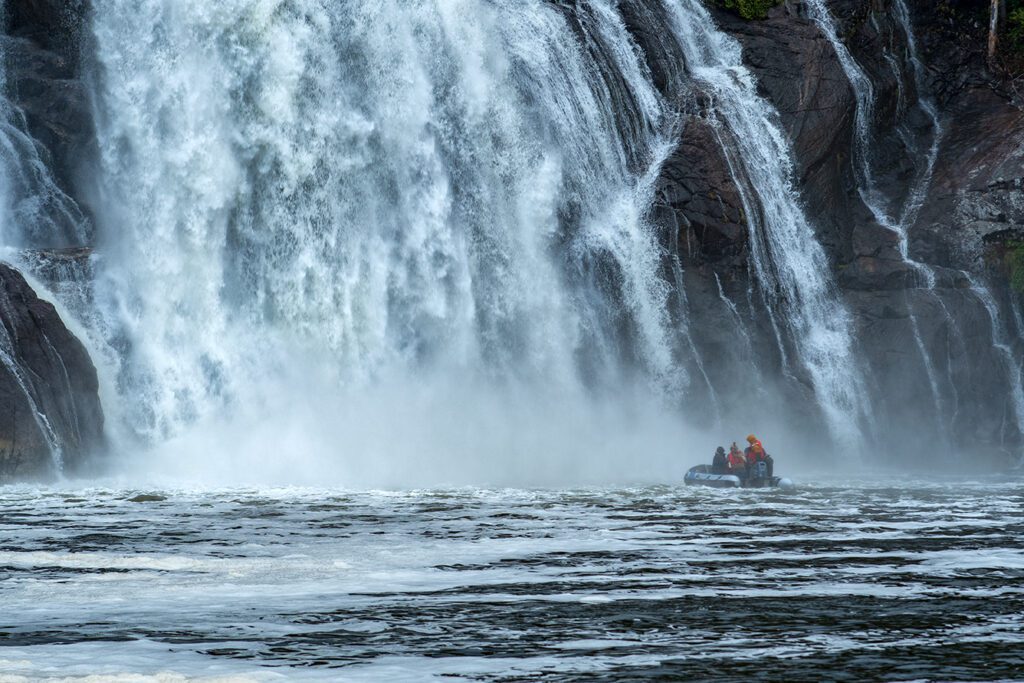
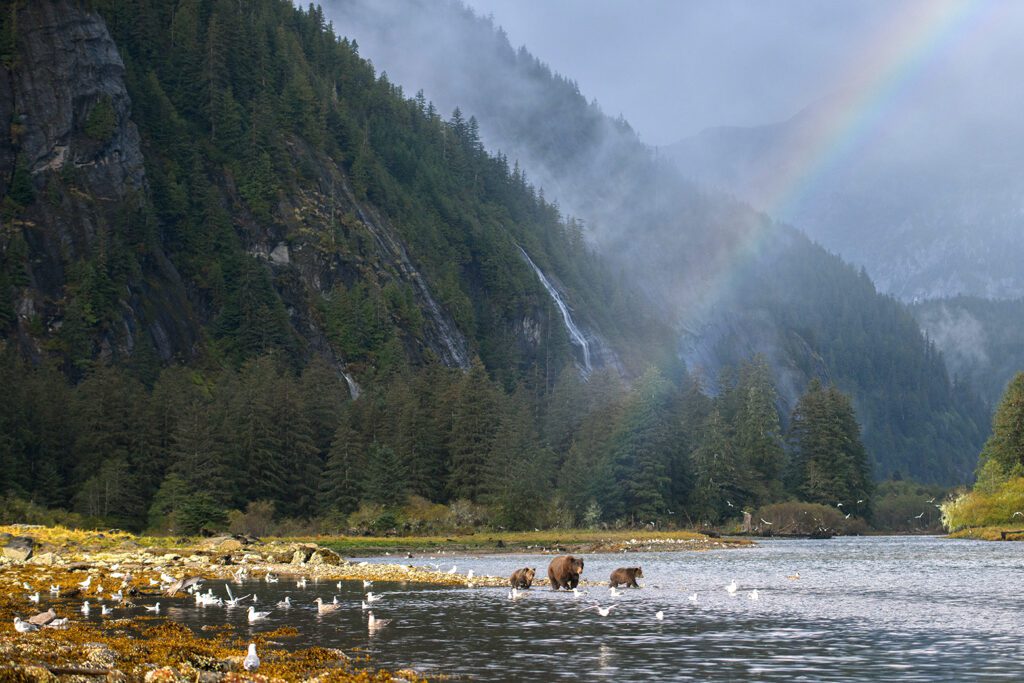
© Christian Heeb 2024
Do you want to be part of this nature experience? This will be possible in autumn 2026.

